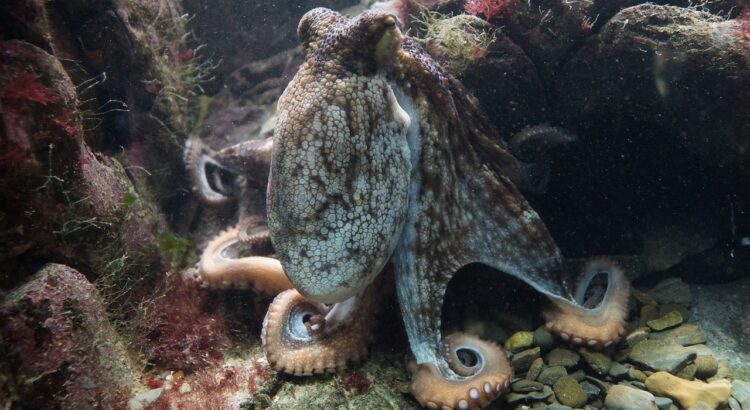Octopuses, the enigmatic denizens of the oceans, conceal many secrets. One of them is that all octopus species are venomous. Discover how they use their venom for hunting, defense, and much more.
IN BRIEF
- Octopuses, with their eight arms and exceptional camouflage skills, are all venomous, using their venom to survive and defend themselves.
- The venom, produced by modified salivary glands near the beak, immobilizes prey by attacking their nervous system, making consumption easier.
- Octopus venom, used for hunting and defense, could lead to biomedical advancements, including the development of new medications.
Octopuses captivate with their intriguing appearance, featuring eight flexible arms and an exceptional talent for camouflage. Although they may seem intimidating, they harbor a lesser-known secret: all octopuses are venomous. This surprising and fascinating discovery raises as many questions as it does wonder. But what role does this venom play in their daily lives? By examining the anatomy of these mollusks more closely, we uncover the various ways they use their venom to survive and defend themselves.
Anatomy of Octopuses: Venom and Beak
Octopuses possess a fascinating anatomy, notably their beak, often compared to that of a parrot. This beak is located at the center of their arms and is the primary tool they use to inject their venom.
The venom of octopuses is produced by modified salivary glands located near the beak. Once a prey is captured by the octopus’s powerful arms, the beak comes into play, piercing the shell or skin of the victim to inject venom.
This venom, which contains a variety of toxins, immobilizes the prey by attacking its nervous system, making it easier to consume. Although all octopuses are venomous, the toxicity of their venom varies significantly from species to species.
How Octopuses Use Their Venom in Hunting
Hunting in octopuses is a true demonstration of precision and efficiency. Mostly nocturnal, they use their arms to explore crevices in reefs and capture prey such as crustaceans, fish, and sometimes even other octopuses.
Once the prey is captured, the venom plays a crucial role. In some species, the venom serves to instantly paralyze the victim, allowing the octopus to consume it at leisure. This venom acts rapidly, turning the prey into a soft paste that the octopus can easily ingest.
In addition to hunting, the venom can also be used defensively, deterring predators or other potential threats.
Source: Science et Vie



